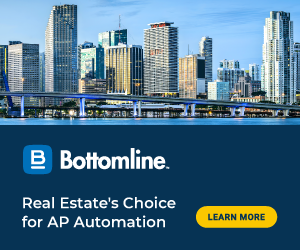Economic Occupancy: Measure the Effectiveness of Your Real Estate Investments

Economic occupancy is a crucial metric for measuring how effectively you manage and invest in real estate. Whether you’re a large investment firm or a retail investor, understanding economic occupancy – and calculating it accurately – is essential for maximizing returns and making informed decisions about your properties.
How to calculate economic occupancy
To accurately assess a property’s economic occupancy, follow these simple steps:
- Determine gross potential rent (GPR) : Start by calculating the total income the property could generate if all units were leased at fair market rates. Multiply the number of units by the market rent for each unit.
- Calculate actual rent collected : Next, tally the actual rental income collected for the given period. Consider both occupied and vacant units, and account for any rent rate variations.
- Compute economic occupancy : With the GPR and total rent collected determined, divide the actual rent collected by the GPR and multiply by 100 to get the result as a percentage.
For example, in a property with ten units renting at $700 each per month:
Gross potential rent (GPR) = 10 units x $700/month = $7,000 per month
For instance, if seven units are occupied by five tenants paying $700 each and two tenants paying $500 each:
Total rent collected = ($700 x 5) + ($500 x 2) = $4,500 per month
Economic occupancy = (total rent collected / gross potential rent) x 100
Using the figures from our example:
Economic occupancy = ($4,500 / $7,000) x 100 ≈ 64%
In this scenario, the economic occupancy for the given period is approximately 64%. The property is realizing 64% of its full income potential based on market rents, considering the mix of tenants and rental rates. Evaluating economic occupancy regularly lets property owners and managers gauge the property’s financial performance accurately and implement strategies to optimize revenue streams.
Property management software can automatically calculate economic occupancy and use it to create reports and compare alongside other metrics for full visibility of portfolio performance.
What if my economic occupancy is over 90%?
When your property’s economic occupancy exceeds 90%, it signals robust financial performance and positive attributes:
Efficient management
An economic occupancy above 90% indicates the property is well-run. Vacancies are minimized, and resources are effectively allocated to maintain tenant satisfaction, occupant comfort, and property upkeep.
Market-driven rent
Achieving economic occupancy over 90% suggests your rental rates are competitive and in line with market value. Tenants are willing to pay the asking rent, reflecting the property’s perceived market value.
Tenant satisfaction
High economic occupancy typically correlates with satisfied tenants. When tenants are content with their conditions and provided services, they’re more likely to renew leases, reducing turnover and vacancy rates.
Solid financial performance
Economic occupancy exceeding 90% indicates strong, income-earning performance for the property. With most units leased at market rates, revenue streams are optimized, which helps cover expenses and potentially yield surplus income.
What if my economic occupancy is under 90%?
When economic occupancy is under 90% consistently for more than a few months, there might be some underlying issues which need to be addressed.
Why might my economic occupancy be under 90%?
From market fluctuations to operational inefficiencies, understanding the reasons behind suboptimal economic occupancy is essential for devising effective strategies to address them.
- Rent is too high : This situation poses challenges for retaining existing tenants and attracting new ones, ultimately affecting the property’s overall occupancy rate.
- Tenants defaulting on payments : Despite high physical occupancy, economic occupancy may plummet if tenants fail to pay rent. Unpaid rent may stem from tenant dissatisfaction. In this case, it’s important to address concerns promptly, especially maintenance issues. Timely responses and swift repairs enhance tenant satisfaction and strengthen economic occupancy by fostering a positive tenant experience.
- Too many vacancies : A high number of vacancies directly correlates with low economic occupancy. Several factors can contribute to excessive vacancies:
- Too many incentives : Maintaining a delicate balance between providing incentives and safeguarding long-term economic occupancy is critical for property owners.
Existing tenants may struggle to afford the rent if it exceeds market value. Some tenants may begin to default on payments, leading to a decrease in rental income and potentially higher turnover rates as tenants seek affordable alternatives. This scenario not only impacts economic occupancy but also disrupts cashflow stability for the property.
Moreover, prospective tenants may opt for competing properties offering comparable amenities at lower rental rates. If your property’s rent isn’t competitive in the local market, you may face a higher vacancy rate as tenants choose other options. This rate directly affects economic occupancy, as vacant units contribute to a lower overall income potential for the property.
Lowering the rent to align with market rates can help ensure more units are occupied over the long term. While this adjustment may result in a temporary decrease in rental income, it can ultimately lead to higher economic occupancy by attracting and retaining tenants who value affordability and quality options.
Rent disparity: When rental rates are higher compared to similar properties nearby, tenants may choose more affordable options, leading to vacancies.
Maintenance standards: Subpar maintenance diminishes tenant satisfaction, prompting them to seek alternatives.
Security concerns: Inadequate security measures in or around the property can deter potential tenants, exacerbating vacancy rates.
Economic downturn: Economic uncertainty drives tenants to prioritize cost-saving measures like downsizing or seeking cheaper options, contributing to higher vacancy rates.
Before offering discounts or concessions, it’s essential to calculate their short and long-term effects on economic occupancy. While discounts can attract new tenants and retain existing ones, their impact on economic occupancy must be weighed against potential losses.
Despite potential short-term dips in economic occupancy, offering incentives is often a strategic move to bolster tenant retention and attract new lessees. The long-term benefits of fostering tenant loyalty and maintaining a stable occupancy rate often outweigh temporary fluctuations in economic occupancy.
This Week’s Sponsor
MRI Software is a leading provider of real estate software solutions that transform the way communities live, work, and play. MRI’s open and connected, AI-first platform empowers owners, operators, agents, and occupiers in commercial and residential property organizations to innovate in rapidly changing markets. For more information, please visit mrisoftware.com.
Read Next
 6/13/2024
6/13/2024
Putting the Power of AI to Work for CRE The business case for AI in commercial real estate is coming into clear focus. When combined with deep operational data,
 5/23/2024
5/23/2024
26th Annual Realcomm | IBcon Digie Award Finalists Announced! Realcomm has been presenting the Digie (short for Commercial Real Estate Digital Innovation) Awards since 1999...
 5/23/2024
5/23/2024
The Unrealized Value of Smart Building Systems Building owners have invested in smart buildings based on the promise that bringing diverse building systems together for data sharing and management will reduce operational costs and make assets more attractive to tenants.




.jpg)



